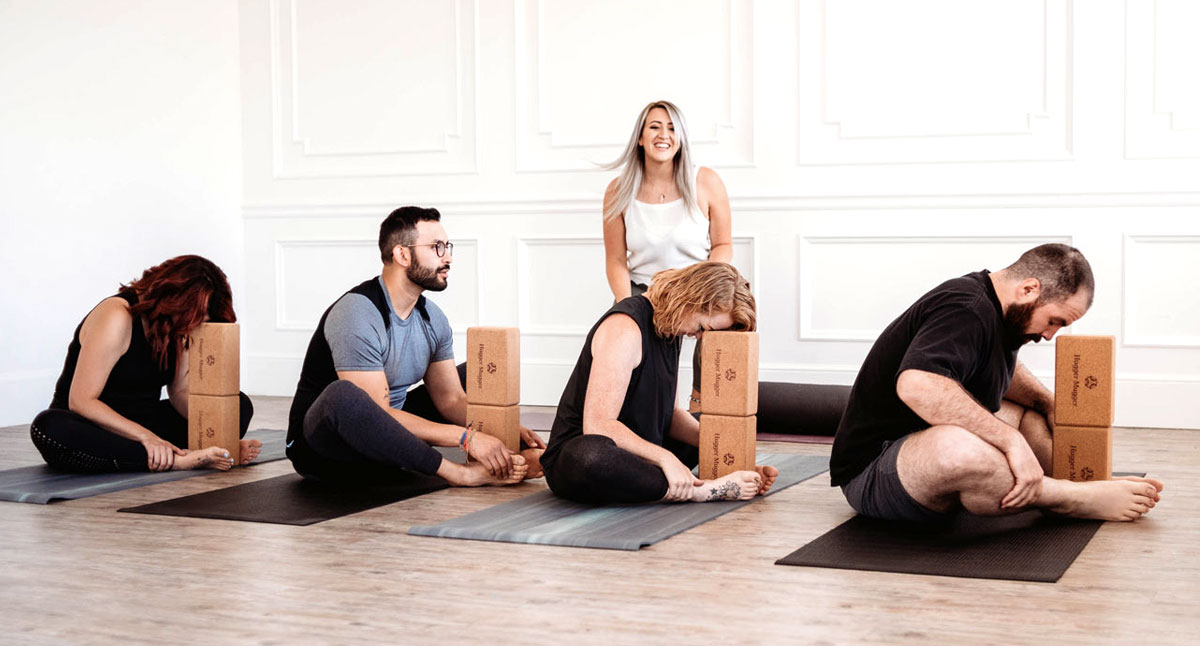
How do you keep everyone safe and happy in a mixed-level yoga class? There’s no easy answer.
In a recent teacher training, I asked trainees to share their ideas about teachers and classes they’ve observed. Specifically, I asked what has worked and what hasn’t.
One student related this story that she found confusing: A teacher in a fairly large, mixed-level class asked students if there were any injuries or health issues that might affect their ability to participate in the class. One student raised his hand explained that his knees were injured and unstable. The teacher then proceeded to teach the class she had planned—a class filled with kneeling poses and others that required deep knee flexion—and didn’t offer modifications to the injured student.
The teacher trainee asked: Why would a teacher go to the trouble of asking about injuries and then not address them during the class?
Assessing Differences in a Mixed-Level Class
I can only speculate, but several possible reasons come to mind. First, the class was a Vinyasa flow class. There’s not a lot of time to introduce modifications and props when students are only spending a few seconds in each pose. Second, perhaps the teacher was fairly new and needed the security of her planned sequence in order to feel confident. Or maybe the teacher simply wasn’t familiar with how to modify poses to accommodate knee problems or what alternatives the student could substitute for the class she’d planned.
In any case, there are additional problems with this strategy—or lack of strategy—that I can identify at the outset. First of all, I never ask students about their injuries or conditions in the class room. There are many conditions that students would rather not announce to their classmates. I always ask new students these questions in private, followed by questions such as, “What movements irritate your injury?” or “Has a doctor or physical therapist recommended that you not do certain movements?” If I’m unfamiliar with the physiology of their condition, I will ask them for specifics.
Sometimes I recommend that they see me for a private session so that we both have a better idea of how to work with their condition in a safe, healthy way. If a student’s issues are complex, I sometimes suggest that they see me in private before attending a group class. That way, I can more easily provide a safe space for them, as well as the other students, who may also need my attention.
There have been times, too, when I have recommended that a student see a qualified therapist before coming to class. After decades of living in my city, I’ve amassed a fairly lengthy list of incredible healers and bodyworkers whose modalities may be more appropriate for particular situations than yoga classes might be.
Beyond Child’s Pose
Too often these days, people are encouraged to lie down or practice Balasana (Child’s Pose) if they want to opt out of a particular pose. This is a healthier option than cajoling students to do every pose no matter what. But it seems a bit lazy, and it may also cause some students to spend half the class in Child’s Pose. Nothing against Child’s Pose, but there are other ways to handle modifications that won’t make these students feel like outliers. Think about it: There are, by some counts, hundreds of yoga asanas. Is Child’s Pose the only alternative?
There are many poses that have similar effects of those you want to teach, but that won’t compromise a student’s imbalance or injury. For example, people with knee issues often struggle with Virasana (Hero Pose). Sometimes elevating their pelvis with blankets, a block or a bolster will alleviate their knee pain so that they can sit comfortably. Sometimes not. When no amount of height under the pelvis is enough, these alternatives might produce similar effects:
- Anjaneyasana (Lunge Pose)
- Sukhasana (Cross-Legged Pose), also with support
- Baddha Konasana (Bound Angle Pose), with support under the knees if needed
- Ardha Virasana (Half Hero Pose) on their easy side with a lunge on the other, etc.
- Supta Baddhakonasana (Reclining Bound Angle Pose) can stand in for Supta Virasana (Reclining Hero Pose) in students with knee problems.
I encourage teachers to make a list of poses that impart similar effects that can serve as alternatives to more challenging poses such as Sarvangasana (Shoulderstand), Urdva Dhanurasana (Upward Bow Pose) and Virasana (Hero Pose). That way all your students can benefit from your sequences regardless of whether they can practice every pose.
Curiosity and Creativity in a Mixed-Level Class
Knowing how to integrate different body types, ages and conditions into a mixed-level class is an art. It takes time and patience to learn, and there are no one-size-fits-all answers. Each situation is different—no two knee injuries, heart conditions, back injuries or depressive states or cancer treatment regimens are the same. Co-learning with individual students is a rich opportunity for both teachers and students.
The ability to see each student as an individual is essential to maintaining a safe container for your classes. First, you have to get to know your students. Huge classes may spread lots of good energy, but they’re not so conducive to meeting the needs of individuals with infinitely variable constitutions, temperaments and genetics. If our classes are to help our students live more graceful lives, we must get to know each one of them and inspire them to love the practice that feeds them right now, in this moment, no matter what it looks like.
